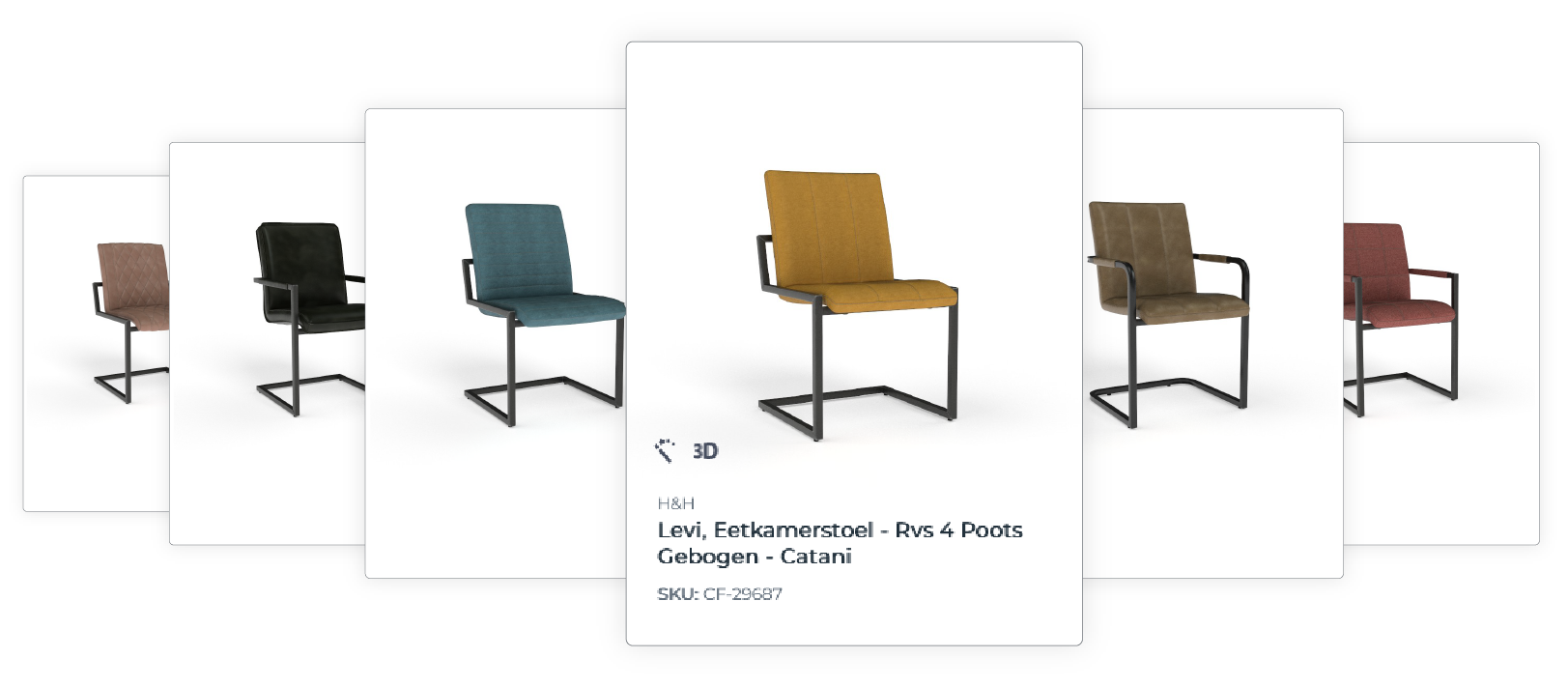One of the consequences of the digitization over the past years is that today’s society is more visually orientated. There is a growing demand for visual content and consumers crave for inspiration and experience in online commerce. However, when it comes to configurable products with loads of variations, creating attractive visual content can be quite a challenge. In these cases, 2D rendering might be a solution.
In the architecture and building construction business this phenomenon has been common practice for a while now: creating images and selling things that don’t really exist yet. The computer was early to replace the classic drawing board as a more accurate and versatile alternative. The need for information about a construction led to the early adaptation of 3D modelling and BIM.
It’s a small step from using a 3D model for constructional use to commercial use. As it turned out, it was far easier to sell buildings and apartments when potential buyers could actually see their new home before buying it, instead of having to imagine it from a description or drawing on paper.
What is 2D rendering?
Creating a two -or three- dimensional image from a 3-dimensional source is called rendering. Rendering is often used in architecture, video games, animated movies, simulators, TV special effects and design visualization. With current render technology, 2D renders can be very realistic. In some cases, renders are of such high-quality that they can hardly be distinguished from reality.
Products -or variants of the product- that do not exist yet, cannot be photographed. It’s a simple law of physics. In addition, it is very unpractical and expensive to first create all possible variants of a product and then drag them to a photostudio to be photographed. As with rendering buildings, creating a 3D customizable model and rendering all imaginable variants to 2D visuals might be a solution.
Traditional 2D rendering
Now if you think this means 2D rendering comes easy and cheap you are wrong. The creation of the 3D art work at the source is a manual and labor-intensive process that, despite today’s modern 3D design software, is mainly done by hand. Once the model is finished though, there is no limit to what you can do with it. Each model can be placed in any creative context: from highly realistic to total fantasy.
When it comes to rendering, the creation of the model is just part of the time needed. Creating a high quality 2D render requires a lot of calculating power from computers that, in some cases, are number crunching for hours. The higher the level of detail of the render, the more time the rendering process takes.

Automated live rending: the smart alternative
However, there is a quicker and cheaper alternative. The whole rendering process can be shortened drastically by means of Automated live rendering, as is done by iONE360, smartly using the 3D models that have already been made for the iONE360 3D product configurator.
The big advantage of automated live rendering is that the rendered image is created on the fly, while the configuration is being built, creating and serving only the 2D renders needed. This means that large stacks of unused pre-rendered material is a thing of the past. In addition, once an image is created, it is saved, so that each image only has to be created once. Moreover, the images created are of such high quality, you can hardly tell the difference from a real product photo.
Connecting a render service to a 3D configurator is especially beneficial if you need to create large numbers of photorealistic renders of different versions of a single model.
In conclusion, 2D automated live rendering is a very fast, cheap and easy way to reproduce customizable products in different variants, thus creating endless possibilities to expand and add color to your content library.
Please don’t hesitate, we would love to get to know you